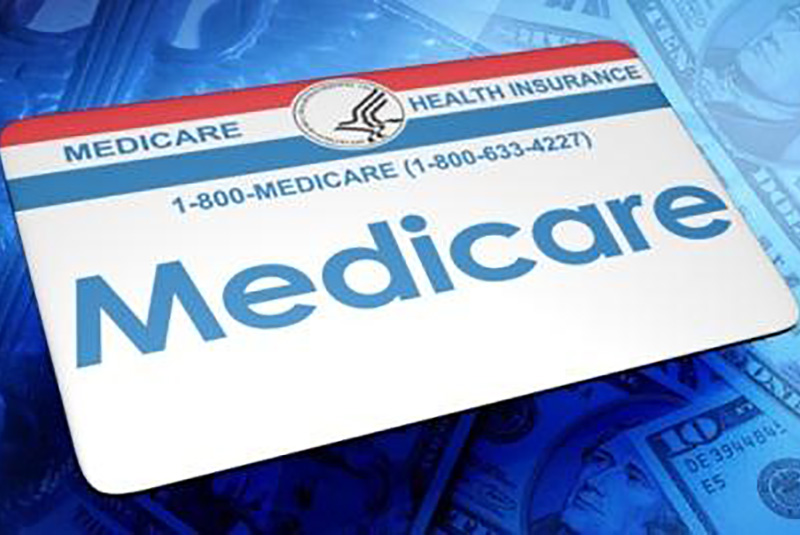CNBC.com —
Medicare is often referred to as a maze. The various deadlines for signing up may have something to do with that.
While turning 65 makes you eligible for Medicare, not everyone will follow the same path to enrollment. Some beneficiaries are automatically signed up, while others may partially enroll or take no action until long after their eligibility age.
Roughly 62.4 million people are enrolled in Medicare, the majority of whom are age 65 or older. Basic Medicare consists of Part A (hospital coverage) and Part B (outpatient care and medical equipment). Most people qualify for premium-free Part A because they have a long-enough work history of paying into Medicare through payroll taxes. Part B comes with a standard monthly premium, which is $144.60 for 2020.
More from Personal Finance:
Medicare changes may be in next coronavirus relief package
Treasury canceling stimulus checks to dead recipients
‘Jumbo’ loans may be harder to get. Here’s what to expect
Part D plans (prescription drug coverage) also have premiums, which can vary by plan. Higher earners pay more for Parts B and D, while low earners may qualify for Medicaid coverage and get extra help for prescriptions. There are also Medicare Advantage Plans (Part C) as well as Medicare supplement plans, aka “Medigap” (more on these options farther down).
If you’re currently planning to sign up, you probably shouldn’t wait until the last minute.
Now for those deadlines. (It’s best if you sit down while reading; it gets complicated fast.)
Parts A and B if you’re 65
If you already are receiving Social Security before age 65, you’ll be automatically enrolled in Part A.
The same applies to Part B in the above situation. While you can opt out, be sure you have acceptable coverage in its place — as defined by the government — if you plan to enroll down the road.
“If you don’t want Part B, you need to notify Social Security to disenroll you,” said Danielle Roberts, co-founder of insurance firm Boomer Benefits.
Be aware that if you don’t enroll in Part B when you were supposed to and have no other qualifying coverage, you could face late-enrollment penalties.
That amount is 10% of the standard premium for each 12-month period you should have been enrolled. (There is no penalty associated with delaying Part A).
Individuals who aren’t auto-enrolled in Parts A and B at age 65 get a seven-month window to sign up unless they choose to delay it due to qualifying coverage elsewhere. That initial enrollment period starts three months prior to the month of your 65th birthday and ends three months after it.
Be aware, though, that if you wait until the month you turn 65 or during the three months after that to enroll, your Part B coverage will be delayed, which could cause a gap in coverage.
Related deadlines
Regardless of whether you are auto-enrolled or sign up on your own at age 65, there are other deadlines to know.
If you want to pair Parts A and B with a standalone Part D prescription drug plan, you should do this during your seven-month initial enrollment period. Many beneficiaries who go this route also purchase a Medigap policy to cover some out-of-pocket costs that come with Parts A and B (more on Medigap farther down).
If you don’t get Part D coverage during this time, whether through a stand-alone plan or an Advantage Plan, and later go to sign up, the penalty is 1% of the national base premium ($32.74 for 2020) for each full month you should have had that coverage.
Meanwhile, if you want an Advantage Plan instead of a stand-alone prescription plan and/or Medigap (you can’t combine an Advantage Plan with Medigap), you also get until the end of your initial enrollment period to purchase one, Roberts said.
These plans, which are offered by private insurance companies, deliver Parts A and B, and typically Part D. They also come with caps on out-of-pocket spending and often include extras like dental and vision coverage. Any premium charged would be on top of the one for Part B.
As for when you can sign up if you miss the deadlines: For Part B, you’d have to wait until general enrollment, which is every year from Jan. 1 through March 31, with coverage taking effect July 1. That means a potential gap in health coverage.
If you do go this route, you can sign up for Part D from April 1 through June 30, with coverage starting July 1, as well.
You also can sign up for Part D during the yearly open enrollment period, which is Oct. 15 through Dec. 7. Same goes for Advantage Plans.
After age 65
Some Medicare-eligible workers choose to delay enrolling in at least Part B because they have employer coverage that the government considers acceptable alternative coverage — i.e., group insurance at a large company.
However, they might enroll in Part A, because it’s free. (Be aware that you cannot contribute to a health savings account if you have Medicare, even if only Part A.)
If you need to sign up for Parts A and/or B upon losing job-based coverage, you get eight months to do so without facing a late-enrollment penalty for Part B.
…

